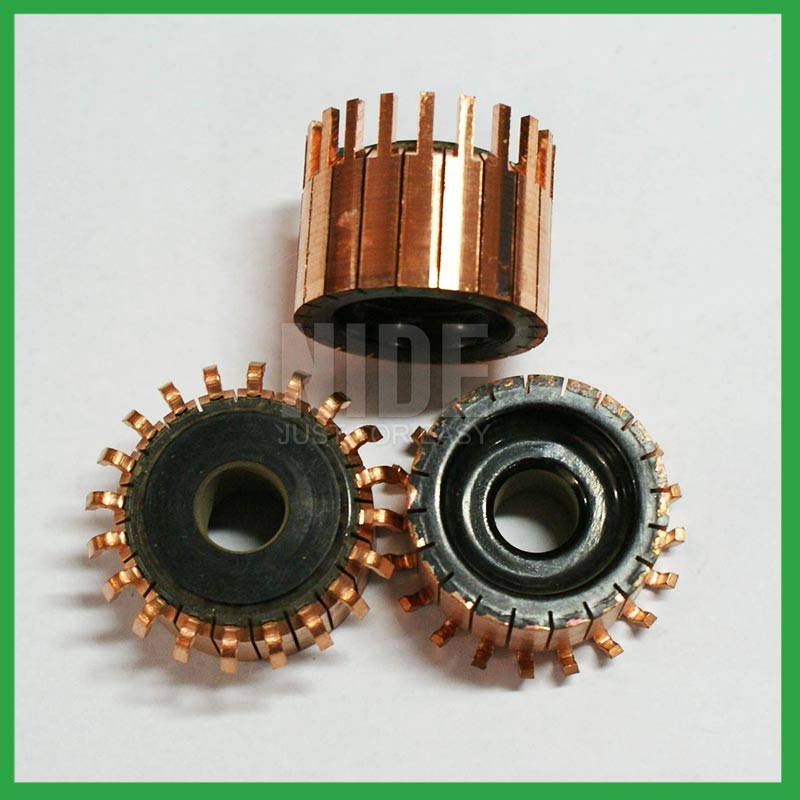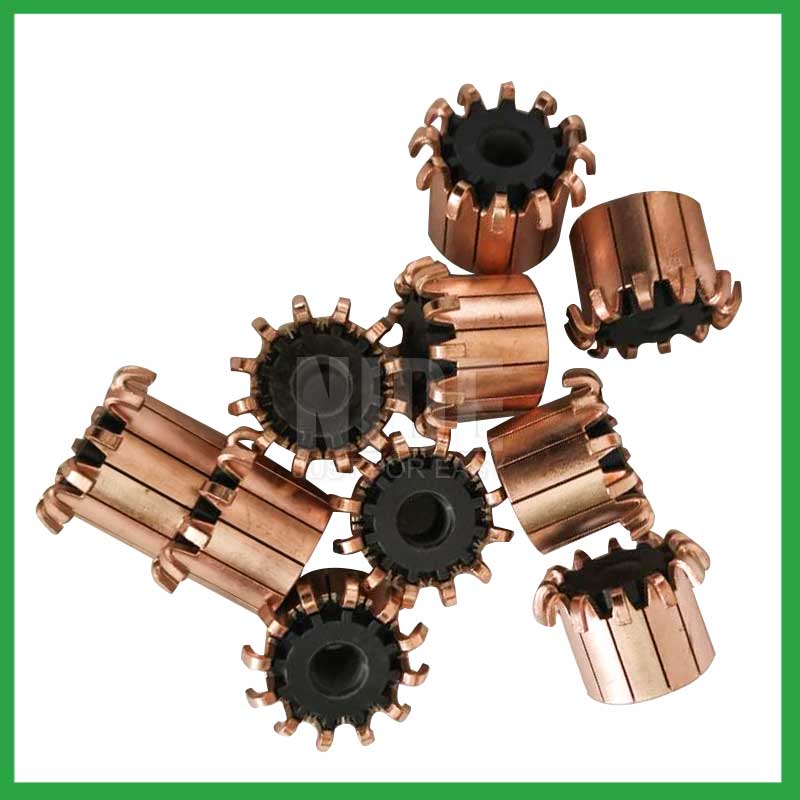2024-10-14
In the world of electric motors, the commutator is a critical component that plays a pivotal role in ensuring efficient operation and smooth energy transfer. As technology advances, so too do the materials, designs, and performance capabilities of commutators. At Nide International, we specialize in developing high-performance commutators, such as our Nide Commutator CX Series, that enhance motor efficiency and durability across a wide range of applications, from automotive systems to industrial machinery. In this article, we will explore the benefits of advanced motor commutators and how they contribute to improved motor performance and longevity.
A motor commutator is an electrical switch that reverses the current direction in a motor’s armature, ensuring that the motor rotates continuously. In brushed DC motors, the commutator works in conjunction with carbon brushes to transfer electrical power from the stationary part of the motor (stator) to the rotating part (rotor or armature). This cyclical reversal of current allows the motor to generate the torque needed to drive mechanical systems efficiently.
At Nide International, we manufacture commutators using high-grade copper and advanced insulation materials to ensure optimal conductivity and heat resistance. Our CX 2000 Series Commutators are designed to handle high rotational speeds and heavy loads, making them ideal for both industrial and automotive applications.

Advanced motor commutators provide several benefits that contribute to better motor performance, improved energy efficiency, and enhanced reliability. Below are some of the key advantages of using advanced commutators in modern motors:
One of the major improvements in advanced motor commutators is their increased durability. Traditional commutators are prone to wear and tear due to constant friction with carbon brushes. Over time, this can lead to reduced efficiency and eventual failure. However, modern commutators, such as the Nide CX Series, are constructed using high-quality copper alloys and optimized carbon brush materials to minimize wear.
This increased durability translates to longer service life and reduced maintenance costs, making these commutators ideal for demanding applications such as electric vehicles, household appliances, and industrial equipment.
Electrical performance is another area where advanced commutators outshine traditional designs. The materials and design innovations used in modern commutators significantly reduce electrical losses and improve the overall efficiency of the motor.
At Nide International , our CX 3000 Series commutators are engineered to provide exceptional electrical performance, ensuring smooth operation in high-precision applications.
Heat management is a critical factor in motor performance, particularly in high-speed or heavy-load applications. Traditional commutators are susceptible to excessive heat buildup, which can lead to arcing, insulation breakdown, and eventual motor failure. Advanced commutators are designed with better thermal properties to handle higher operating temperatures.
One of the key benefits of advanced motor commutators is their versatility. Modern commutators are designed to meet the demands of a wide range of applications, from small precision motors to large industrial systems. Whether it’s in high-torque automotive motors or in the delicate operation of medical devices, advanced commutators can handle varying loads, speeds, and environmental conditions.
For instance, the Nide CX 5000 Series commutators are ideal for heavy-duty industrial motors that require high torque and continuous operation, while the CX 6000 Series is designed for small, high-speed motors used in precision applications like drones or robotics.

Advanced motor commutators offer significant benefits in terms of durability, electrical performance, heat management, and versatility. By reducing wear, improving power transfer, and handling higher temperatures, these commutators extend motor life and improve efficiency, making them the go-to solution for a wide range of applications. At Nide International, our commitment to innovation ensures that our commutators, like the CX Series, meet the highest standards of quality and performance.
Whether you need commutators for industrial machinery, electric vehicles, or household appliances, choosing advanced motor commutators from Nide International ensures long-lasting performance, reduced downtime, and optimized motor efficiency.
Q: What materials are typically used in Nide International’s commutators?
A: At Nide International, our commutators, such as the CX 2000 Series, are made from high-conductivity copper alloys and feature advanced insulation materials. This combination provides excellent electrical performance and heat resistance, ensuring the commutators can handle high-speed and heavy-load applications.
Q: How can I prevent arcing in my motor’s commutator?
A: Arcing can be prevented by ensuring that the commutator and carbon brushes are properly aligned and maintained. Additionally, using advanced commutators like the CX 4000 Series, which are designed to reduce contact resistance and improve heat dissipation, can help minimize arcing and extend the life of the motor.
Q: What is the typical service life of an advanced commutator?
A: The service life of a commutator depends on several factors, including the motor’s operating conditions, load, and speed. Advanced commutators from Nide International, such as the CX 5000 Series, are designed for high durability and can last up to 10,000 operational hours or more, depending on usage and maintenance.